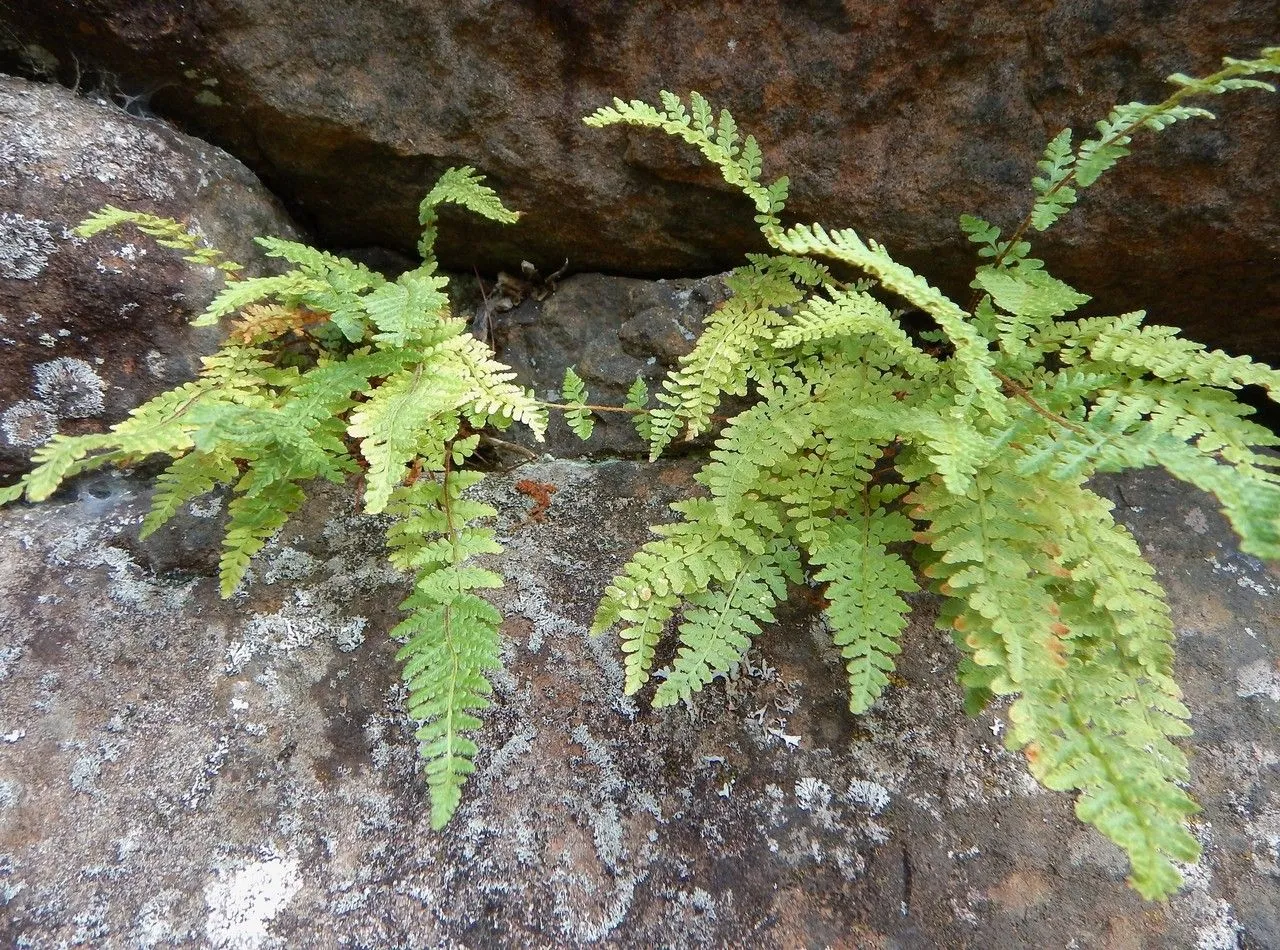
Author: (L.) R.Br.
Bibliography: Prodr. Fl. Nov. Holland.: 158 (18)
Year: 18
Status: accepted
Rank: species
Genus: Woodsia
Vegetable: False
Observations: Subarctic & Temp. Northern Hemisphere
Rusty woodsia, scientifically known as Woodsia ilvensis, is a distinctive fern native to subarctic and temperate regions of the Northern Hemisphere. This resilient plant is a member of the Aspleniaceae family and is celebrated for its hardiness and adaptability to a variety of environments.
Adapted to thrive in challenging conditions, the rusty woodsia is typically found in rocky crevices and on open slopes where little soil is present. These habitats often feature high levels of sunlight and well-drained, stony substrates, which are perfect for the fern’s growth. The plant’s ability to survive in such rugged terrains highlights its exceptional ecological versatility.
Rusty woodsia is easily identified by its petite, tufted fronds that exhibit a characteristic rusty hue, particularly noticeable on the underside where the sporangia (spore cases) are located. This rust-colored feature not only gives the plant its common name but also is a key identification characteristic. The fronds are also covered in tiny, hair-like scales, adding to their textured appearance and further contributing to the plant’s distinctive aesthetic.
Botanically, Woodsia ilvensis is an intriguing subject for study due to its unique adaptations. The fern’s tolerance to extreme temperature variations and its ability to grow in minimal soil make it a model organism for understanding plant survival strategies in harsh environments. Further, the plant’s reproductive cycle, characterized by its spore dispersal from the rusty sporangia, provides insights into fern propagation and lifecycle.
Historically, the rusty woodsia has been documented in botanical literature and was notably described in the “Prodromus Florae Novae Hollandiae” on page 158, a significant work authored by the distinguished botanist Robert Brown, who referred to the species under its current scientific designation.
In summary, Woodsia ilvensis, or rusty woodsia, serves as a fascinating example of botanical resilience and beauty. Its adaptations to subarctic and temperate climates, coupled with its distinctive rusty-colored fronds, make it a significant plant within the family Aspleniaceae. This fern not only contributes to the biodiversity of its native habitats but also offers valuable insights for botanical studies on plant adaptation and survival.
Deu: rostroter wimperfarn, südlicher wimperfarn
Eng: rusty cliff fern, rusty woodsia, oblong woodsia, fragrant woodsia, rusty cliffbrake
Pol: rozrzutka brunatna
Nld: roestbruine wimpervaren
Sme: guolgaráktodealgi
Swe: hällebräken, vanlig hällebräken
Fra: woodsie d’elbe, woodsia de l’île d’elbe, woodsie de l’île d’elbe, woodsie illinoise
Cym: coredynen hirgul, rhedynen-woodsia hirgul
Gla: raineach mhion fhad-shliosach
En: Rusty woodsia, Oblong woodsia, Rusty Cliff Fern, Fragrant woodsia, Rusty cliffbrake
Zh: 岩蕨
Cs: Kapradinka skalní
Nl: Roestbruine wimpervaren
Et: Ida-kiviürt
Fi: Karvakiviyrtti
Fr: Woodsie d’Elbe, Woodsia de l’île d’Elbe, Woodsie de l’île d’Elbe, Woodsie illinoise
De: Rostroter Wimperfarn, Südlicher Wimperfarn
Hu: Hegyi szirtipáfrány
Is: Liðfætla
It: Felcetta pelosa
Se: Guolgaráktodealgi
No: Lodnebregne
Fa: سرخس کشیده
Pl: Rozrzutka brunatna
Gd: Raineach Mhion Fhad-shliosach
Sv: Hällebräken, Vanlig hällebräken
Uk: Вудсія ельбська
Cy: Rhedynen-Woodsia hirgul, Coredynen Hirgul
Taken Jul 9, 2019 by QldAu Gullies (cc-by-sa)
Taken Mar 10, 2020 by dora (cc-by-sa)
Taken Jan 1, 1900 by EOL − Encyclopedia of Life (cc-by-nc)
Taken Feb 7, 2020 by Tarazona Laura (cc-by-sa)
Taken May 6, 2020 by Talasyn Osborne (cc-by-sa)
Taken Oct 6, 2015 by EOL − Joe Walewski (cc-by-nc)
Taken Mar 11, 2016 by EOL − Denis Doucet (cc-by-nc-sa)
Taken Jan 1, 1900 by EOL − Encyclopedia of Life (cc-by-nc)
Taken Jan 1, 1900 by EOL − Encyclopedia of Life (cc-by-nc)
Taken Jan 1, 1900 by EOL − Encyclopedia of Life (cc-by-nc)
© copyright of the Board of Trustees of the Royal Botanic Gardens, Kew.
© copyright of the Board of Trustees of the Royal Botanic Gardens, Kew.
© copyright of the Board of Trustees of the Royal Botanic Gardens, Kew.
Growth habit: Forb/herb
Description: “”
Sowing: “”
Bloom months: [‘jun’, ‘jul’, ‘aug’]
Family: Myrtaceae Author: (F.Muell.) K.D.Hill & L.A.S.Johnson Bibliography: Telopea 6: 402 (1995) Year: 1995 Status:…
Family: Rubiaceae Author: Pierre ex A.Froehner Bibliography: Notizbl. Bot. Gart. Berlin-Dahlem 1: 237 (1897) Year:…
Family: Sapindaceae Author: Koidz. Bibliography: J. Coll. Sci. Imp. Univ. Tokyo 32(1): 38 (1911) Year:…
Family: Asteraceae Author: A.Gray Bibliography: Pacif. Railr. Rep.: 107 (1857) Year: 1857 Status: accepted Rank:…
Family: Fabaceae Author: Medik. Bibliography: Vorles. Churpfälz. Phys.-Ökon. Ges. 2: 398 (1787) Year: 1787 Status:…
Family: Aspleniaceae Author: (Cav.) Alston Bibliography: Bull. Misc. Inform. Kew 1932: 309 (1932) Year: 1932…